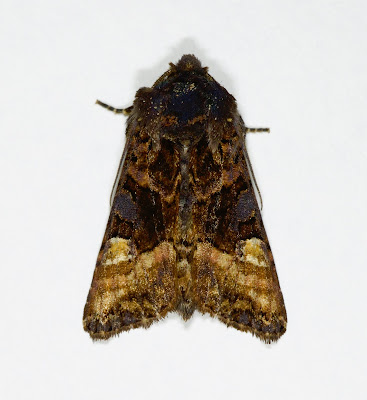Status: Common throughout the UK.
'Well-folded, Light-bearer'
(Eu = good/well + plexia = from plexus, folded or interwoven: Latin, lucipara = from luciparens, light-bearing: Latin)
Like its larger relative (the Angle Shades), this species has creased forewings and hair-tufts which add to its dead leaf disguise.
Up close, this is a very attractive moth: the forewings are striated with shades of gold and toffee-brown, flushed with salmon-pink on the trailing edges and they have a prominent 'angled' central bar of rich mahoganey brown. There is an oily violaceous sheen on the orbicular stigmata and the tufts of hair on thorax and abdomen.
The bright gold reniform stigmata inspired the species name 'lucipara' (light-bearing) and this moth is known in France as 'la luisante' - 'the shining'.




 Flight Period: One generation: June to July.
Flight Period: One generation: June to July.Foodplants: A wide range of herbaceous & woody plants (especially Bracken and other ferns).










